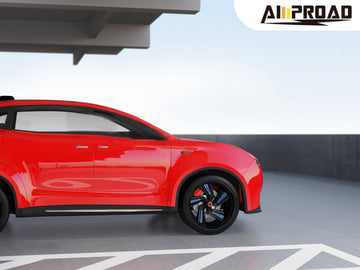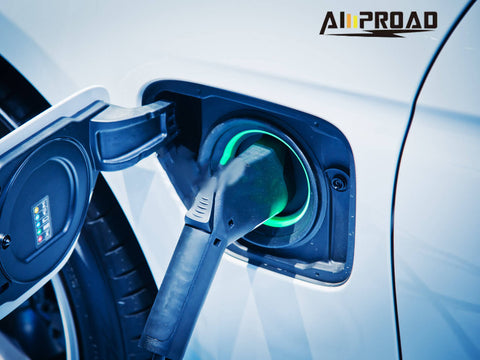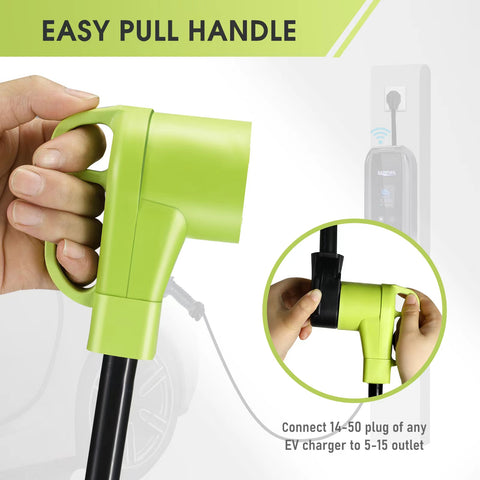
When you turn the key in your car's ignition and nothing happens, it's easy to feel frustrated and confused. A dead battery, a faulty starter, or even a fuel system issue could be to blame. Identifying the cause is the first step toward getting back on the road. Checking the battery connections, listening for clicking sounds, or testing the alternator can provide clues. In many cases, a jump-start or simple fix can resolve the issue, while more complex problems may require professional attention. Understanding these possibilities can help in finding a quick and effective solution.
Why Your Electric Car or Gas Car Won't Start
Whether you're at the wheel of an electric car or a traditional gasoline-powered vehicle, there are numerous common culprits for the frustrating scenario of a non-starting vehicle. A dead battery is a top contender for both types of vehicles; it could be the main high-voltage battery in an electric car or the 12-volt auxiliary battery in either case. Additionally, a faulty car jump starter motor can hinder the engine from cranking in gas cars, while in electric vehicles, problems with the electric motor can have a similar effect. Issues with the ignition system, such as a malfunctioning ignition switch, can be a source of trouble for gas cars, and electric cars have their own ignition systems that may run into problems. Gas cars face the possibility of not starting due to fuel delivery issues, like a clogged fuel filter or a malfunctioning fuel pump, while electric cars can be stymied by charging or power supply issues, be it the charger, charging cable, or power source. A gas car with an empty fuel tank might stall, so ensuring an adequate fuel level is vital.
In modern vehicles, troubles with the key or key fob, such as dead batteries or malfunctions, can prevent starting. Additionally, security systems can inadvertently activate and inhibit the car from starting. Faulty sensors, which both types of cars rely on, can lead to starting issues, as can problems with the engine or electric motor itself. Transmission problems, such as being in the wrong gear, can affect both types of vehicles, and safety interlocks, found in many cars, may thwart the starting process if conditions like the vehicle not being in the correct gear, the clutch not being engaged (for manual transmissions), or the brake pedal not being pressed aren't met. Regular maintenance and an understanding of your vehicle's unique requirements are crucial for minimizing the risk of these issues, and should your car refuse to start and the root cause eludes your diagnostic skills, it's advisable to seek the expertise of a professional mechanic for a thorough inspection and repair.
Understanding EV Charging
Car not starting can be frustrating, especially if you are in a rush. There are several reasons why your car might not start, and this guide will help you diagnose and fix the problem. We will cover common issues related to electric vehicles and gas cars, including how to charge Tesla 110v outlet, the importance of home EV charging, and the benefits of using a portable jump starter.
What Is Home EV Charger and How Does It Work?
Electric vehicles (EVs) have gained significant popularity in recent years as a way to reduce greenhouse gas emissions and combat climate change. EVs are powered by electricity rather than gasoline, and they require charging instead of filling up at a gas station.
One of the most convenient ways to charge an EV is through home EV charger. Home charging allows EV owners to charge their cars overnight from the comfort of their own homes. This eliminates the need to visit public charging stations and provides a cost-effective and convenient way to keep the car charged.
EV home charger is typically installed in a garage or driveway and can be connected to a standard electrical outlet or a dedicated circuit. The installation process can vary depending on the make and model of the EV charger, but it usually involves running wiring from the electrical service panel to the charging location and mounting the charger to a wall.

There are two types of home EV chargers: Level 1 and Level 2. Level 1 charging uses a standard 120-volt household outlet and can take up to 24 hours to fully charge an EV, depending on the battery size and charging rate. Level 2 charger, on the other hand, uses a dedicated 240-volt circuit and can charge an EV much faster, typically in 4-6 hours.
When it comes to choosing the right home EV charger, there are a few things to consider. One important factor is the charging speed. If you have a longer commute or a larger battery, you may want to consider a Level 2 EV charger for faster charging times. Another factor is the cost of the charger and installation. While Level 1 chargers are more affordable, EV charger level 2 can be more expensive but offer faster charging times.
It's also important to consider the make and model of your EV when choosing a home charger. Some EVs come with a built-in charger, while others require an external charger. It's important to check the EV manufacturer's recommendations to ensure compatibility with the charger.
So, home EV charging station is a convenient and cost-effective way to charge your EV. With the right charger and installation, you can enjoy the benefits of EV ownership without the inconvenience of visiting public charging stations.
How to Choose the Right EV Charger for Your Needs
Choosing the right home EV charger can be a daunting task, especially with so many options available on the market. When selecting a home EV charger, there are several factors to consider.
Firstly, you need to determine your charging needs. If you have a larger battery or a longer commute, you may want to consider a Level 2 charger with a higher charging rate for faster charging times.
Secondly, you need to ensure compatibility with your EV. Some EVs come with a built-in charger, while others require an external charger. It's important to check the EV manufacturer's recommendations to ensure compatibility with the charger.
Lastly, you need to consider the cost of the charger and installation. While Level 1 chargers are more affordable, Level 2 EV charger can be more expensive but offer faster charging times. Additionally, installation costs can vary depending on the make and model of the charger and the complexity of the installation process.
By taking the time to consider these factors, you can choose the right home EV charger that meets your needs and budget.

AMPROAD's Top Picks for Home Charging
There are many great options for home EV chargers on the market, but some stand out above the rest. Our top picks for EV home charging include the ChargePoint Home Flex, JuiceBox Pro 40, and Siemens VersiCharge.
The ChargePoint Home Flex offers a high charging rate, Wi-Fi connectivity, and compatibility with a variety of EVs. The JuiceBox Pro 40 is a versatile and affordable option with a compact design and smart charging features. For those seeking a professional-level solution, the Amproad Level 2 EV charger stands out with its impressive performance and advanced features. The Siemens VersiCharge is a reliable and durable option with a sleek design and an easy installation process.
No matter which charger you choose, make sure to consider your charging needs and compatibility with your EV.
Where to Find and How to Use the Charging Station Near Me?
EV charging stations are becoming more and more common in public areas, including shopping centers, hotels, and parking lots. To find EV charging stations, you can use smartphone apps like Plugshare, ChargePoint, or EVgo, which provide maps of nearby charging stations and even allow you to reserve a charging spot in advance.
Using an EVSE charging station is simple. Once you arrive at the station, you will need to plug your EV into the charger using the appropriate cable. Some charging stations require an RFID card or smartphone app for authentication and payment, while others are free and open to the public.
After you have connected your EV to the charger, it will begin charging automatically. The charging time can vary depending on the type of charger and your EV's battery size and charging rate. It's important to note that some charging stations may have a time limit, so it's a good idea to check the station's policies before charging.
Once your EV is fully charged, simply unplug the cable and move your car from the charging spot to allow other EV owners to use the station. By following these simple steps, you can use EV charging stations to keep your EV charged and ready for your next journey.
How to Charge Your Tesla at Home?
Charging a Tesla at home is easy thanks to the company's proprietary charging system, which is compatible with both Level 1 and Level 2 charging stations. Tesla recommends using a Level 2 charger like AMPROAD iFlow P9 portable EV charger for faster charging times and offers its own home charging solution, the Tesla Wall Connector, which is capable of charging up to 44 miles of range per hour.
To use the Tesla Wall charger, you will need to have it installed by a licensed electrician. The installation process involves mounting the charger on a wall and running wiring from the electrical service panel to the charging location. Once the charger is installed, you can simply plug in your Tesla using the provided cable, and the charging will begin automatically.
For Level 1 charging, you can simply use the Mobile Connector that comes with your Tesla, which plugs into a standard 120-volt household outlet. However, this method is much slower than Level 2 charging and only provides up to 4 miles of range per hour.
By using a Tesla Wall Connector or a Level 2 charging station, you can keep your Tesla charged and ready for your next adventure.

Using Jump Starters for Gas Cars
Portable jump starters are a convenient way to jump-start a gas car without the need for another car. They are small and lightweight, making them easy to carry in your car's trunk.
There are two types of portable jump starter for gas car: jump boxes and car battery jump starters. Jump boxes are self-contained units that include a battery and a set of jumper cables. They are portable and easy to use, but they can be more expensive than car battery jump starters. Car battery jump starter is smaller and less expensive than jump box, but they require a separate 12-volt battery to function.
To use a portable jump starter for a gas car, you will need to connect the cables to the battery terminals in the correct order. First, connect the positive cable to the positive terminal of the dead battery. Then, connect the other end of the positive cable to the positive terminal of the jump starter. Next, connect the negative cable to the negative terminal of the jump starter. Finally, connect the other end of the negative cable to a metal part of the engine block on the dead car. Start the engine of the dead car and let it run for a few minutes before disconnecting the cables.
When choosing a car jump starter for your gas car, there are a few things to consider. First, you will need to make sure that the jump starter has enough capacity to jump-start your car's battery. Second, you will need to ensure that the jump starter is compatible with your car's battery type and voltage. Finally, you should consider the size, weight, and price of the jump starter to ensure that it meets your needs and budget.
By following these simple steps and choosing the right jump starter for your gas car, you can get your car back on the road quickly and safely.


